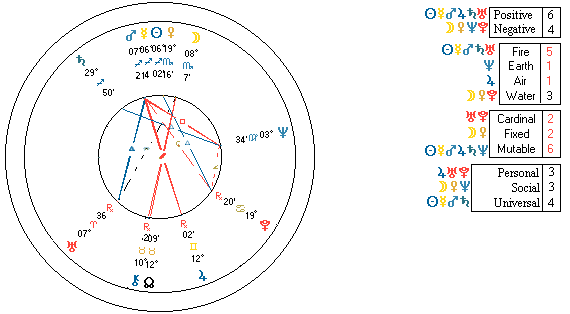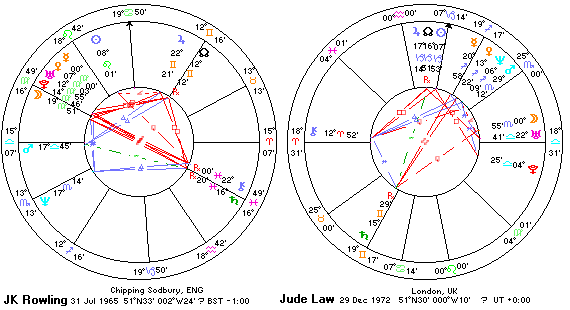In putting all this information together it is necessary to look for confirmation of themes between
different sections of the interpretative system and to check for contradictions. Checking all the angles and flavours,
the things that go together and clash, getting used to the idea of how planets that are uniquely placed by sign or aspect tend to function,
understanding midpoint and other planetary combinations and all sorts of other considerations
are vital to becoming a good astrologer.
I do not wish to do a complete
interpretation of Berry Gordy's
chart here, only to point the way in this example and hope the reader finds some value in
using this system. Thus I shall look at Neptune as an example planet.

It is clear that Neptune is a powerful factor in the chart. It is the only planet in an Earth sign, it is square
the all-important Sun and the focus of the only T-Square in the chart we can be sure of (remembering that
there may be other T-Squares in the chart when set from the correct time!). It is impossible to know what other midpoints
Neptune is on, but it does gain power in midpoint patterns through the fact that we know the Mars/Neptune and
Jupiter/Neptune midpoints are very powerfully configured with important chart factors. It is therefore clear that
the squares Neptune makes to Mars and to Jupiter are important aspects. This focus - in sign placement, aspects and midpoint
patterns, suggest that Neptune could be an important outlet for Berry. The facts of his life, which has been spent working
(Virgo - the Earth sign that Neptune is in) with Music (Neptune) confirm this to be the case. It's also possible to note
Neptunian themes from elsewhere in our interpretation: Note that Gordy was born in the final, Balsamic, phase
of the Moon, which carries a Neptunian undertone.
Of course, in every chart you are obliged to look at in this way, there being no birth time available, you
must look at the Sun carefully. The Sun gains importance in the absence of any availability of great detail
concerning the Moon (in this case we are lucky enough to know the Moon's sign and should weave this into our
delineation), the Midheaven and Ascendant.
In Berry's case it is clearly strong as it is aspected by all the outer planets, is conjunct two inner planets
and opposite Jupiter. Thus Solar themes will be strong in the life and consideration of the closest midpoints should be
made. When looking at 'no time' charts one needs to remember that vital factors are missing, but, in my experience,
a great deal can be learnt from 'no time' charts using the methods outlined here.
I'll leave you with two current 'mystery birth time' charts, which you might enjoy testing any new tricks
learnt here on. Unfortunately one of them was born on a day the Moon changed sign.

NOTE: Originally Michael Moore's time unknown chart was up, but three days after this section was uploaded
AstroDatabank came up with this! I'm
very happy to see we now have a proper timed chart for him, though a bit bemused that it happened just as I went to press!





